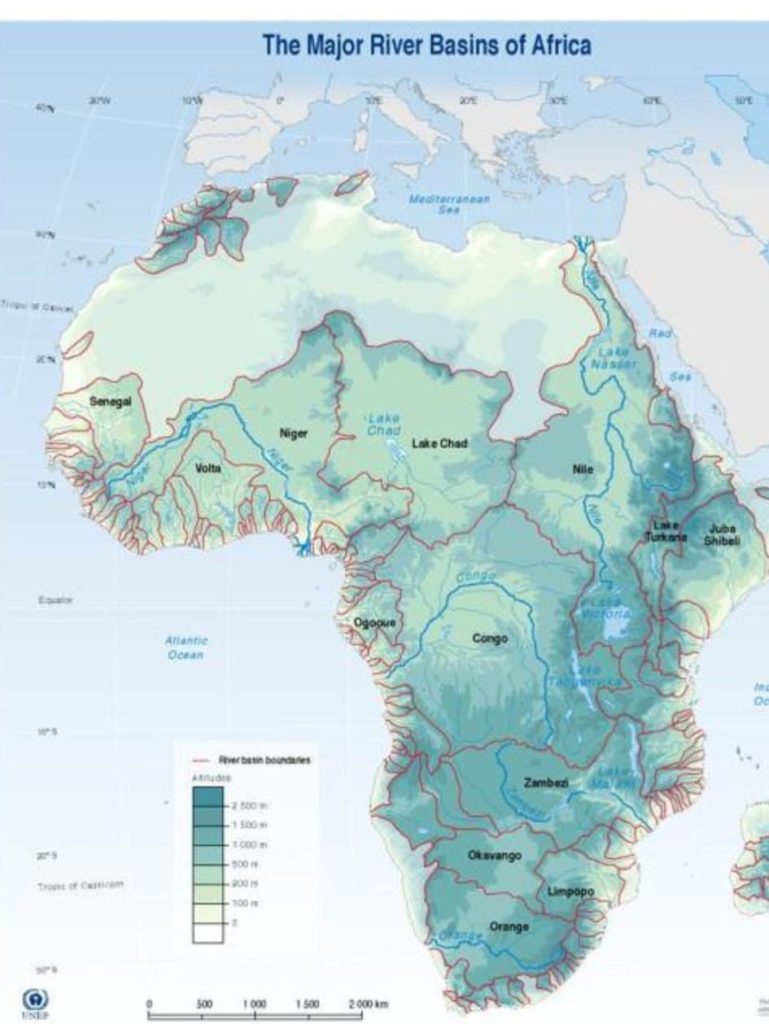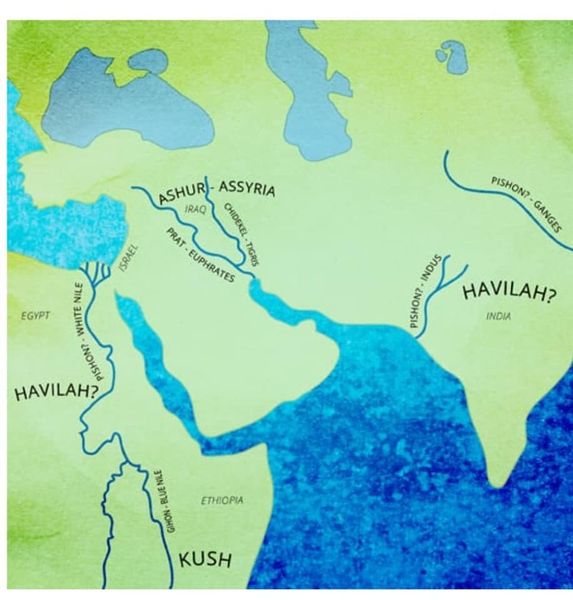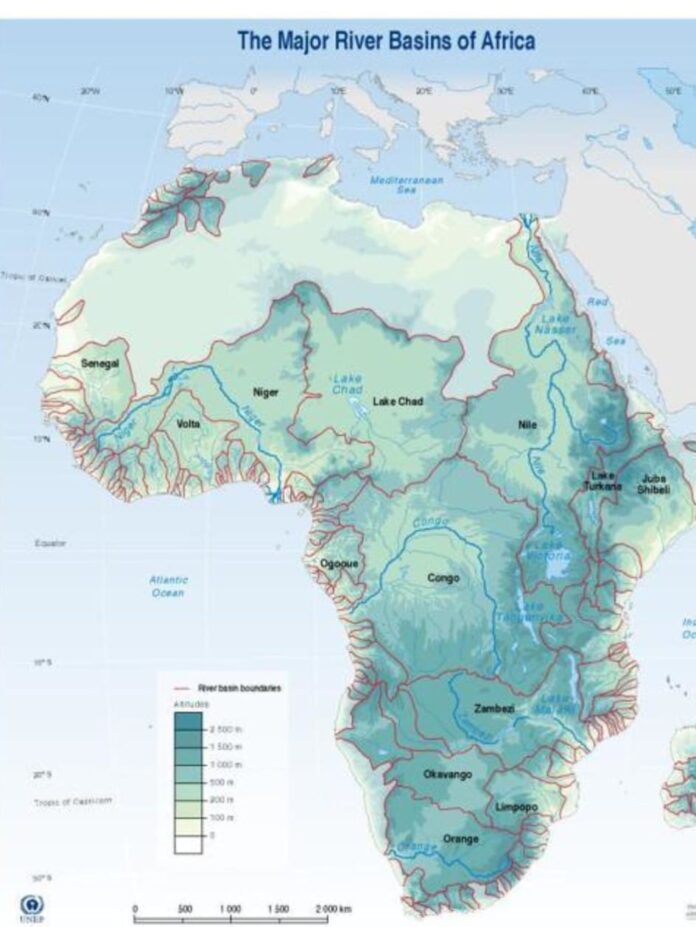By Peter Sinkamba
FURTHER CLUES ON THE LOCATION OF THE GARDEN OF EDEN: THE SADC HYPOTHESIS
As is the case with many other aspects of the creation account in the Bible, the discussion regarding the four rivers written in Genesis is shrouded in mystery. The descriptions given in the Bible are rather vague, and there has been much debate throughout the ages regarding their exact identity.
The text that discusses these rivers can be found in Genesis 2:10–14, and reads as follows:
“A river flowed out of Eden to water the garden, and from there it separated and became four heads. The name of one is Pishon; that is the one that encompasses all the land of Havilah, where there is gold. The gold of that land is good; there is the crystal and the onyx stone. The name of the second river is Gichon; that is the one that encompasses all the land of Cush. The name of the third river is Chidekel; that is the one that flows to the east of Ashur. And the fourth river, that is Perat.”
What can be clearly deduced from a cursory reading of these verses is that there exist four rivers, Pishon, Gichon, Chidekel and Perat, which all seemingly flow from the same source, the Garden of Eden.
There are no rivers identified by such names in the world. So, the location of the rivers is just assumed.
Let’s begin with the second two, since their identification appears to be agreed upon almost commentators.
The name of the third river is Chidekel; that is “the one that flows to the east of Ashur”.
The Chidekel is widely accepted as being the Tigris River, which flows from southeastern Turkey through Iraq, and eventually spills into the Persian Gulf.
The assumption arises from the story of Daniel in the Bible who describes standing on the banks of the Chidekel River while receiving one of his visions during the time when he was in exile in Babylonia. So, the Chidekel River is assumed to be in the region of ancient Babylonia, which is present-day Iraq. According to this identification of the lication, Chidekel River is widely assumed as the Tigris River.
And the fourth river mentioned in the verse is Perat. Commentators identify Perat as the Euphrates River, because it runs almost parallel to the Tigris.
The Euphrates River is later mentioned in God’s promise to Abraham regarding the Land of Israel, and is used as one of the defining borders of the Promised Land. We are also told that there was a time when Jewish civilization had spread so far that members of the tribe of Reuben were living all the way to the banks of the Euphrates.
While these two rivers are easily identifiable and their location is readily agreed upon, the identification of the other two proves more difficult, and is the subject of much debate.
The verse gives us more details regarding the Pishon River than any of the others, yet the information itself is extremely unclear.
“The name of one is Pishon; that is the one that encompasses all the land of Havilah, where there is gold. And the gold of that land is good; there is the crystal and the onyx stone.”
Until 1984, there were no known gold reserves in Iraq. So, Pishon could not be licated in Iraq or anywhere closer.
Hence, foremost biblical commentators shifted their identification of Pishon as the Nile River. But Nile does not have the same source as Tigris and Euphrates.
According to this view, the area called Havilah refers to somewhere along the Nile region, perhaps Egypt or Sudan.
There is no doubt that Egyptians were known to have mined gold and precious stones back in pre-dynastic times, especially in the region known in ancient times as Nubia, modern-day southern Egypt and Sudan.
Other commentators identify the Pishon as the Ganges River, which flows through India and Bangladesh, emptying into the Bay of Bengal.
This view is off tangent because of the mention of Kush.
“The name of the second river is Gichon; that is the one that encompasses all the land of Cush.”
The land of Cush is typically associated with Ethiopia, and the Gichon is therefore understood to refer to the Blue Nile. The Blue Nile begins in Lake Tana in Ethiopia and meets the White Nile in Khartoum, Sudan, where together they form one river that flows all the way to Egypt.
So, where Is the Garden of Eden?
If these four rivers all flow forth from the Garden of Eden, their identification should give us some clue as to the whereabouts of the Garden.
The problem is, however, that there is no central location from which all of these four rivers flow in the Middle East. The Euphrates and the Tigris are in the northeast region, whereas the two Nile rivers are in the southwest, very far apart, and not one source anyway.
While the exact location of the Garden of Eden cannot be identified in the Middle East, we can infer that it is somewhere within Africa region, between the Zambezi River and the Limpompo River.
There are four major rivers in Africa, with one source, which is the Congo Basin, namely, the Nile, Niger, Congo, and Limpompo. The Zambezi, Luapula, Chambeshi, Lualaba, Kafue, Great Lakes, are all linked to the Congo and Nile River systems.
Gold has been mined in Mali, South Africa and Egypt from ancient times. At one time, Musa of Mali caused a global recession when he distributed unprecedented quantities of gold all the way on a pilgrimage to Mecca.
So, the gold, and four rivers emerging from one source makes the identify the location of the Garden as being exactly somewhere around Botswana, Zimbabwe, Zambia, not south of Jerusalem.
Furthermore, recent DNA findings, and past and present archaeological findings, collaborate the Botswana, Zimbabwe, Zambia location of Eden hypothesis.


